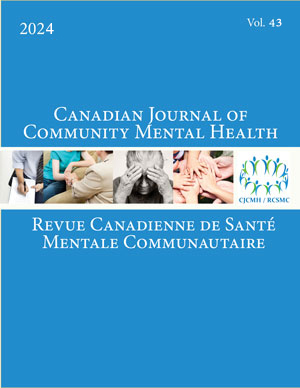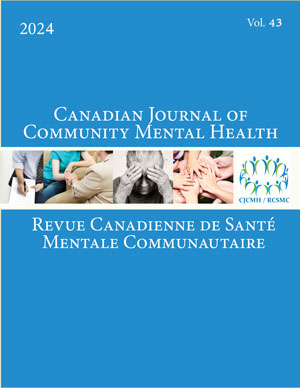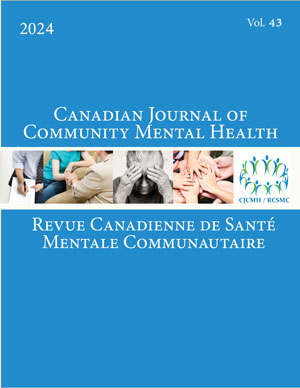Volume 3 • Number 1 • April 1984
OPEN ACCESS
Environmental quality of the entire Manitoba population of community residences, boarding homes and independent living units (278) was examined by an adapted version of Program Analysis of Service Systems (P.A.S.S.-3). The adaptive functioning of residents (665) was also determined by use of sections of the Adaptive Functioning Index (A.F.I.). The findings indicated the need for more promotion of socially integrative activities for residents such as recreation, community awareness and citization of community resources. Improvements in environmental quality were indicated in areas such as integration versus segregation, intensity of special placements exceeding the integrative potential of certain neighborhoods and restrictions on autonomy of residents. Strong, positive correlations were found between environmental normalization and the adaptive functioning level of residents.
OPEN ACCESS
A follow-up study is reported of the mental health and psychosexual adjustment in young adulthood of 57 girls who were removed from home in childhood by Social Service agencies because of abuse, neglect or family breakdown. Twenty of the girls had experienced sexual abuse within the family context before the age of 14. The 57 maternally separated girls were compared with 30 girls who had experienced non-disrupted childhood. Multiple regression analysis showed that early sexual abuse explained more of the variance in adult adjustment than either physical abuse and neglect, or maternal separation. It is concluded that, subject to the limits of the sample, early sexual abuse within the family has severe long-term implications for mental health in adulthood unless appropriate therapeutic intervention is offered. Combinations of sexual abuse with physical abuse or neglect commenced early in the child's life, have particularly adverse outcomes.
OPEN ACCESS
It is the thesis of this paper that involving community residents in the planning and delivery of human services can improve service efficiency and effectiveness. For example, residents can help at the staff level by replacing professionals when they are not needed and by providing a critical supplement to professionals' expertise in holistic approaches. They can help at the agency and system levels by increasing the utilization of allocated resources, by advocating programs which professionals are unlikely to advocate and by focusing program objectives so that they are responsive to local and cultural concerns. In the past, efforts to involve community resident have been hampered by a variety of obstacles, arising within the individual, the team and the system. Residents can lack confidence. Professionals can find it hard to acknowledge their interdependence with those they serve. Teams can lack sufficient power to motivate their members and, without extensive institutional backing, residents and professionals can lack the resources to participate. Dealing with the obstacles that arise requires careful preparation and follow through at each of these levels.
OPEN ACCESS
The present research offers an overview of principal theoretical approaches to understand and explain loneliness. The empirical part attempts to identify certain psycho-social correlates of recent and chronic loneliness, using U.C.L.A. Loneliness Scale in a sample of separated or divorced women (N = 75). Seven correlations (number of months since separation or divorce, number of months since the subjects lives alone, financial problems, age, length of marriage, origin of legal proceedings and absence of new love relationships) were found to be significant at .05 level and were discussed in relation to previous research.
OPEN ACCESS
The following study reports on the long lasting changes in attitudes of mothers who were trained to act as change agents of remediation for the problem behaviours of their children which occasioned them to seek professional help. Three years after termination of treatment, attitude changes not only were maintained but continued to increase in a positive direction.
OPEN ACCESS
Ritual is a concept sometimes used polemically in discussions of health care. Ritual studies can provide a more adequate theoretical orientation than the ones assumed in these debates. As a discipline in the field of religious studies, it treats ritual as embodied metaphor and insists that ritual includes highly differentiated forms, such as religious liturgy and civil ceremony, as well as tacit forms, such as interaction ritual and ritualization. Interaction ritual, in which health care workers participate implicitly, is usually severed from explicit healing rites performed by clergy; therefore, I argue, we need to develop rituals that bridge the gap between tacit medical ones and overtly ecclesiastical ones.
OPEN ACCESS
Mental health and illness are relative concepts in the sense that they vary from one culture to another, in the same way as they may acquire different values in the same cultural context according to the individual to whom they get applied. The present paper offers a brief historical overview of the limitations of mental illness model and identifies a few factors responsible for the relative aspect of the medical model. Relativity in the area of mental health can explain, at least in part, why certain models and theoretical approaches were long in use before they were finally abandoned. Thus, the main challenge of the researchers in the area of mental health is that of defining the optimal criterion for an impirical validation which may be applicable not only to all the facts but may also permit to apprehend several implications of the cultural relativity of mental health.
OPEN ACCESS
The present paper examines the child abuse reporting laws for the province of Ontario, and the associated interpretation of this legislation provided by the Ministry of Community and Social Services, from the perspective of whether or not these documents provide an adequate set of guidelines for the professional who encounters child abuse in the context of carrying out his or her duties. It is concluded that both documents suffer from important deficiencies of interpretation and definition, and the possible implications of these are discussed.
OPEN ACCESS
The admission rate for a centre for the developmentally handicapped was examined for the year of its official opening. Contrary to Saunders and Silverman (1982), who report an approximate 100% increase in admissions for the county containing this facility in the same time period, only 1.2% of admissions were found to be true first admissions from the same county in which the new facility was located. These striking differences of percentage can be attributed to their inaccurate definition of the admission rate variable. These results refute their hypothesis that increases in admissions to a facility is a function of proximity.










